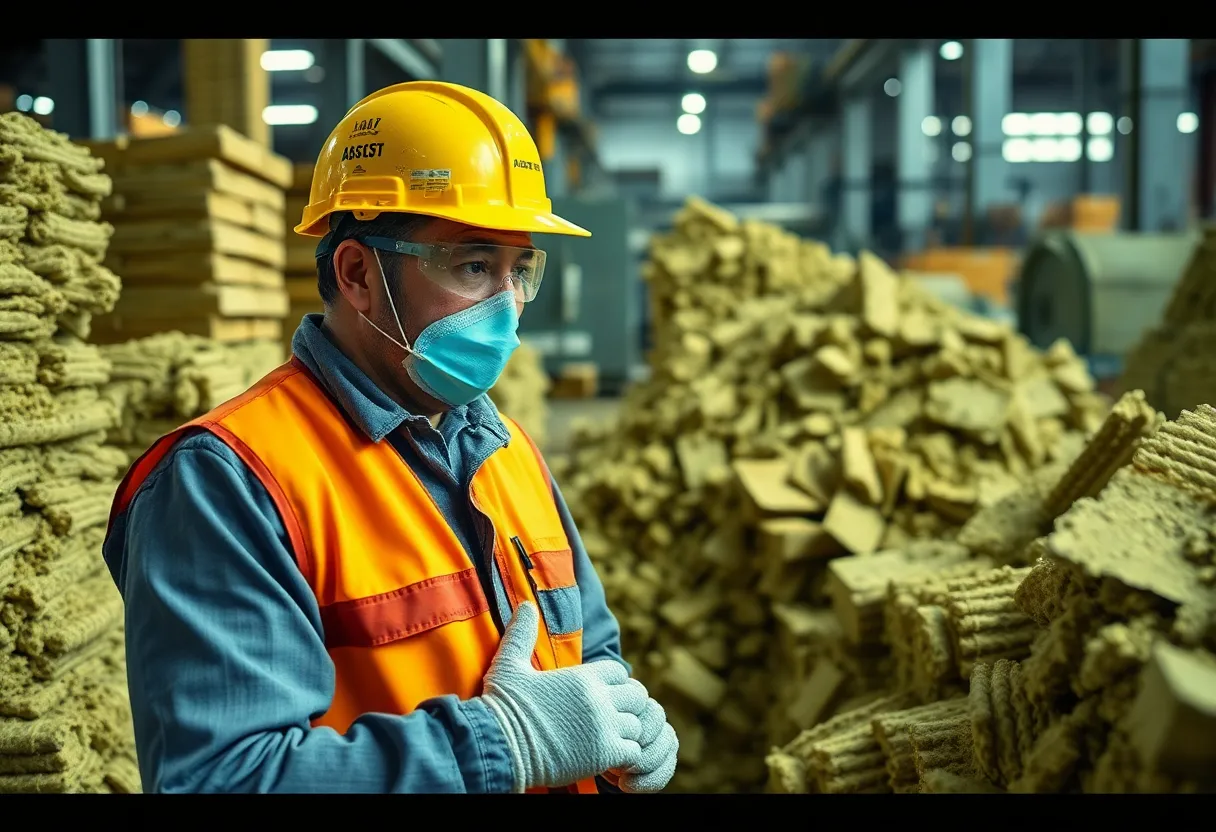News Summary
The EPA’s reconsideration of the chrysotile asbestos ban stirs controversy, raising health concerns among advocates and workers.
EPA’s Daring Move: Reconsideration of Chrysotile Asbestos Ban Raises Alarms
Federal Agencies Under Fire
The U.S. Environmental Protection Agency (EPA) has ignited a firestorm of controversy with its recent announcement that it plans to *reconsider its ban* on chrysotile asbestos, marking a significant shift in policy. Chrysotile asbestos, classified as one of the six types of asbestos still utilized in the United States, is well-known for its perilous health implications, including a strong link to *mesothelioma* and other life-threatening cancers.
This reconsideration could potentially weaken or even roll back the critical protections put in place by a ban finalized in March 2024 under the previous administration. The decision appears to be a direct response to legal challenges from industry groups like the American Chemistry Council, which has been lobbying for a more extended *phase-out period* for asbestos use, raising concerns amongst *health advocates* and workers alike.
Health Risks Facing Workers
Asbestos-related ailments claim approximately *40,000 lives annually* in the United States, underscoring the urgent need for stringent regulations to protect vulnerable workers. Many of these individuals, particularly those in sectors such as construction and manufacturing, are at risk for serious illnesses, including mesothelioma and lung cancer, specifically due to exposure to this *known carcinogen*.
Critics of the reconsideration argue that this shift prioritizes corporate interests over the fundamental right to health and safety. The initial ban allowed certain manufacturers up to 12 years for full compliance — a timeline many deemed excessively lengthy given the dangerous nature of asbestos. This reconsideration process, which might extend up to *30 months*, poses severe implications by delaying necessary protections for American workers potentially exposed to asbestos.
A Call for Comprehensive Action
In reaction to this announcement, numerous health advocates and organizations have voiced serious concern. The Asbestos Disease Awareness Organization (ADAO) has been particularly vocal, advocating for a complete ban on all forms of asbestos through legislative measures such as the *Alan Reinstein Ban Asbestos Now (ARBAN) Act*. They emphasize that any rollback of existing protections jeopardizes public health and safety.
The EPA first enacted its 2024 ban as part of a broader agenda to address toxic substances effectively, following amendments to the Toxic Substances Control Act in 2016, which provided the agency with increased authority to regulate hazardous materials like asbestos. However, the current review process raises questions regarding the agency’s commitment to preserving public health standards.
Legal and Industry Implications
Chrysotile asbestos is primarily utilized in niche industrial applications, including *brake blocks*, *asbestos diaphragms*, and *sheet gaskets*, mainly in the chlor-alkali sector for chlorine manufacturing. Despite the hazardous nature of this substance, manufacturers have continued its use, with data suggesting eight U.S. facilities still relying on asbestos diaphragms for chlorine production, backed by a compliance duration of at least five years following the initial ban announcement.
With critics arguing that revoking the ban primarily benefits industry stakeholders, fears are mounting that increased exposure to abstained carcinogens could lead to a resurgence in asbestos-related diseases. This alarming development has widespread implications, casting a shadow of uncertainty over the future of worker safety and health across the nation.
The Future is Uncertain
As the EPA embarks on a meticulous review of the ban, evaluations of key aspects are likely to undergo scrutiny — potentially leading to modifications or full reversals. Meanwhile, surveys and reactions from health advocates, workers, and families impacted by asbestos-related diseases illustrate a growing consensus: the stakes are high, and lives are on the line.
As public and health advocates prepare to rally against these changes, the spotlight remains firmly focused on the EPA’s next steps. The fight for stringent regulations that safeguard the health of American workers continues, as the landscape of asbestos regulation hangs in the balance.
Deeper Dive: News & Info About This Topic
HERE Resources
The Hidden Dangers of Talc and Its Connection to Cancer Risks
Paradise Hills Pool Shuts Down for Mold and Asbestos Cleanup
South Carolina Supreme Court Delivers Major Blow to Atlas Turner in Asbestos Case
Paradise Hills Pool Set to Make a Splash Again After Closure
Shock Charges Filed Against Philadelphia School District Over Asbestos Hazards
Wallace Family’s Nightmare: Asbestos Scare Forces Evacuation
Philadelphia’s Public Schools Hit with Federal Criminal Charges Over Asbestos Inspections
Rumors Swirl as EPA Considers Reversal on Asbestos Ban
The Uncertain Future of Asbestos Regulation in the U.S.
The Silent Danger of Asbestos Exposure: Urgent Need for Legal Action



















